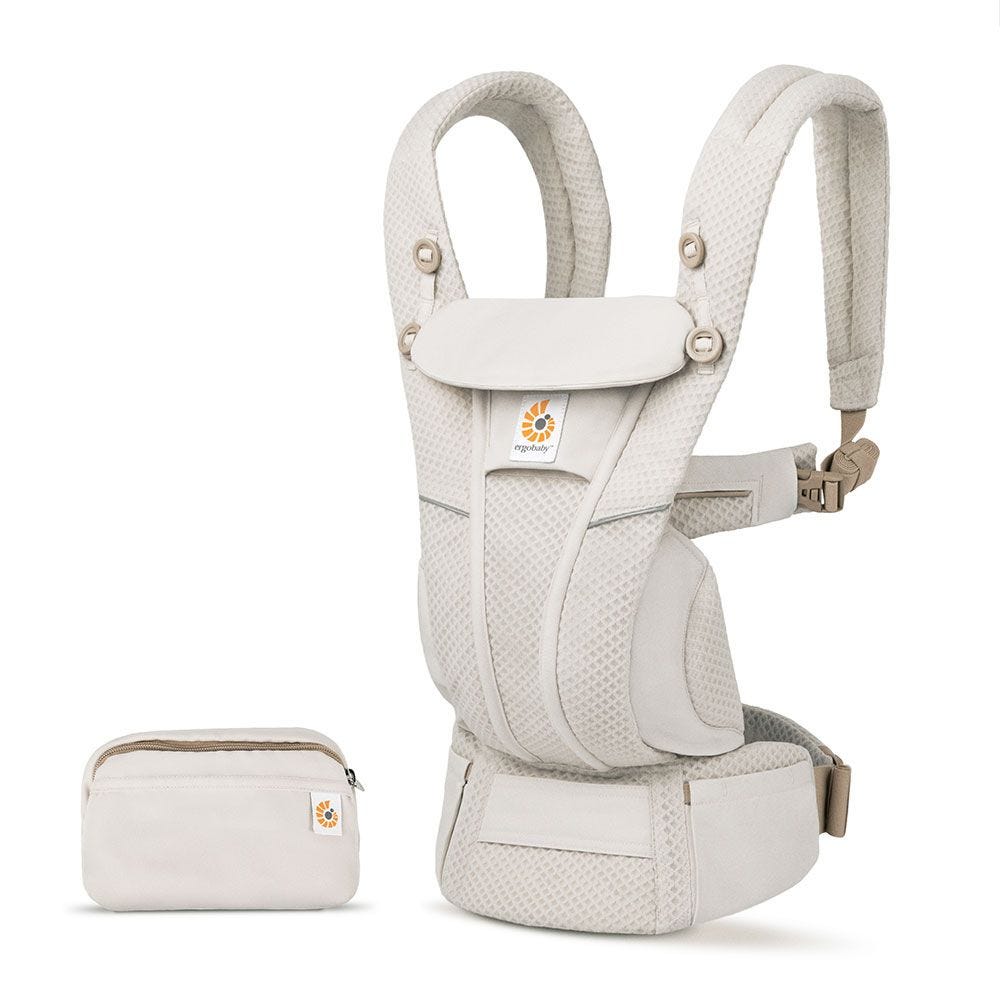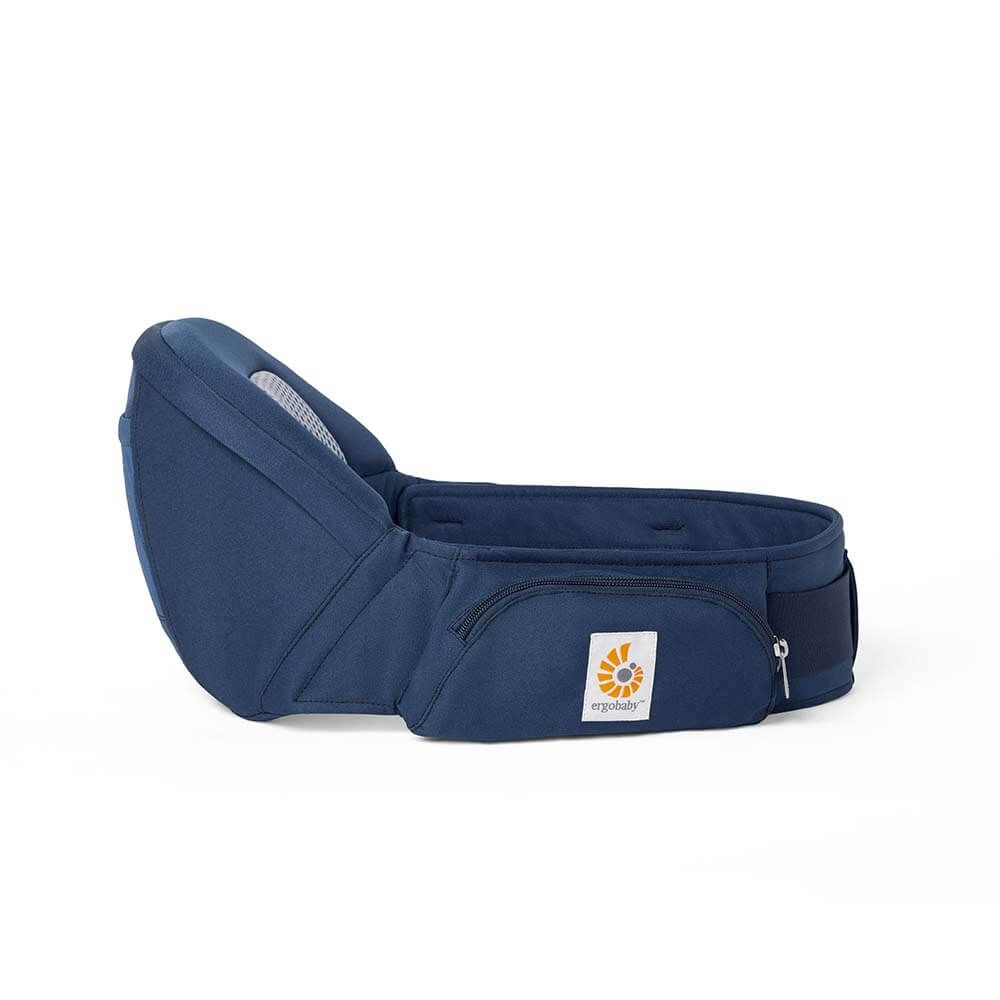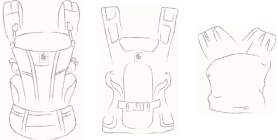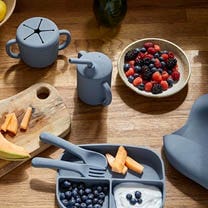Adapt
Frequently Asked Questions
In which carry positions can I use the Ergobaby ADAPT carrier?
The Ergobaby ADAPT carrier is a 3-position baby carrier, and can be used in the front-inward, hip and back carry positions. The Ergobaby ADAPT carrier is not designed to carry a baby in the front-outward position. Please refer to the specific requirements for use for each carry position.
How should I wear the carrier waistbelt?
"The Ergobaby ADAPT baby carrier has a waistbelt with a lumbar support for added comfort for parent. With a newborn baby, you should wear the waistbelt high on your waist so baby is close enough to kiss. When baby gets older, you can keep the waistbelt higher or position it lower on your hips. It is up to you to see what is the most comfortable for you and your baby as she/he gets heavier as every body is different. For smaller babies or parents with a long torso, we recommend wearing the waistbelt higher on your body.
We recommend that you always wear the waistbelt in a snug fit as it allows an even better weight distribution on your hips for more comfort on your back and shoulders. The lumbar support should always be centered on your back in the front-inward and hip carry positions, and centered on the front for the back carry position."
I find it sometimes hard to reach the chest strap on my back to fasten or unbuckle it. What should I do?
Loosening the shoulder straps before buckling or unbuckling the chest strap will make it easier for you to reach it. Make sure to position the chest strap using the sliders on the shoulder straps so it is in the middle of your shoulder blades once you tighten the shoulder straps and get a snug fit for your and your baby’s comfort. You then just need to loosen the shoulder straps so the chest strap is easy to reach close to your neck area when buckling/unbuckling the chest strap. For safety reason, always maintain some tension on the shoulder straps to support your baby when buckling and unbuckling the chest strap. Also, you can try using the ADAPT carrier with crisscross straps when in the front inward-facing carry position as there is no need to reach in the back to buckle/unbuckle the chest strap: all the fastening and tightening is done on the sides.
When should I wear the Ergobaby ADAPT carrier with crisscross (“X”) straps?
You can wear the Ergobaby ADAPT carrier with shoulder straps crossed on your back in the front inward-facing carry position. You can use the crossed straps with smaller babies for a snugger fit on the top of the carrier. This specific setting also allows you to easily position the shoulder straps where it is most comfortable for you to wear them on your shoulders, which makes it a great feature for parents with narrower or wider shoulders. It is also appreciated by parents with less mobility as you don’t need to reach in the back to fasten and tighten the chest strap, as all the buckling and fastening is done on the sides.
Is the Ergobaby ADAPT baby carrier machine washable?
Yes, the Ergobaby ADAPT baby carrier is machine washable as all of our carriers. Make sure to fasten all hook and loop fasteners (velcro) and buckles before washing. Use mild detergent when washing. Do not use detergents with bleach, perfumes, dyes, chlorine, or optical brightener.
What is the age limit of the Ergobaby ADAPT carrier?
The Ergobaby ADAPT carrier can be used until your baby weighs 45 lbs (20 kg), around 4 years old. We generally recommend to wear babies over 2 years old in the back position as it is the most comfortable position for longer durations of carrying with taller and larger babies. We recommend that you carry your baby high enough on your back so she/he can have a fun view of the world over your shoulder.
How do I adjust the Ergobaby ADAPT carrier to my baby’s size?
"The Ergobaby ADAPT carrier adapts to your growing baby in just a few steps.
First, adjust the seat using the velcro tabs on the waistbelt based on your baby’s height: along the red lines for a baby between 20-24 inches (50.8-61 cm), along the yellow lines for a baby between 24-28 inches (61-71 cm), along the blue lines for a baby over 28 inches (71 cm).
Second, use the two straps on the front to further fine-tune the width of the seat at each stage to ensure your baby’s thighs are fully supported from knee to knee in an ergonomic M-shape position. For each seat position, you would usually start with the straps fully pulled and attached to the narrowest snap setting, and gradually release to the medium then widest snap setting as your baby grows to fully support her/his thighs.
Third, adjust the head and neck cushion for proper support: folded on the inside and buttoned from the side to the lower buttons on the front for a tighter support for babies 6 weeks and under, folded on the outside and buttoned to the lower buttons for babies 7 weeks and up."
When can I start using the hip and back carry positions with my baby?
You can start using the hip and back carry once your baby demonstrates strong head and neck control and weighs 17.2 lbs minimum (7.8 kg). This is usually around 6 months. Until then, only use the front inward-facing position to carry your baby.
At what age can I start using the Ergobaby ADAPT 3-position baby carrier with my baby?
The Ergobaby ADAPT baby carrier can be used with your newborn. Your newborn baby must weigh 7 lbs minimum (3.2 kg) and be at least 20 inches tall (50.8 cm). You must carry your infant in the front inward-facing position only until your baby is around 6 months old, demonstrates strong head and neck control and weighs 17.2 lbs (7.8 kg).
Do I need to use the Ergobaby Infant Insert with the ADAPT carrier?
The Ergobaby ADAPT baby carrier has been specifically designed so you can carry your newborn baby (minimum 7 lbs / 3.2 kg) without the need of an infant insert. Easy to use, the Ergobaby ADAPT carrier’s bucket seat gradually adjusts to your growing baby from newborn to toddler (7-45 lbs / 3.2-20 kg) to support your baby in an ergonomic M-shape position at all ages. Only a few adjustments are needed throughout the first months and years of your baby’s life, making this carrier easy to use on the go. You can pre-adjust the carrier to your baby’s size, and you won’t need to re-adjust every time you put on the carrier, until your baby is ready to move to the next size setting.
How should I position the head and neck support for my baby?
Until your baby has demonstrated strong and consistent head and neck support, her/his head needs to be supported. Ensure the top edge of the carrier is at your baby’s mid-ear level for proper support by positioning baby, higher or lower on your body, when pulling the back panel around your baby’s back. For a newborn baby, 6 weeks and under (minimum 7 lbs / 3.2 kg), fold the head and neck support on the inside, and button it to the lower buttons on the front from the side using the tabs for a tighter support. When baby starts to turn his head from side to side and to hold his head for a few moments, you can fold the neck and head support on the outside and button it to the lower buttons. This usually happens around 7 weeks. For older babies, you can also button up the head and neck support for extra support when needed, such as when she/he is sleeping.





















